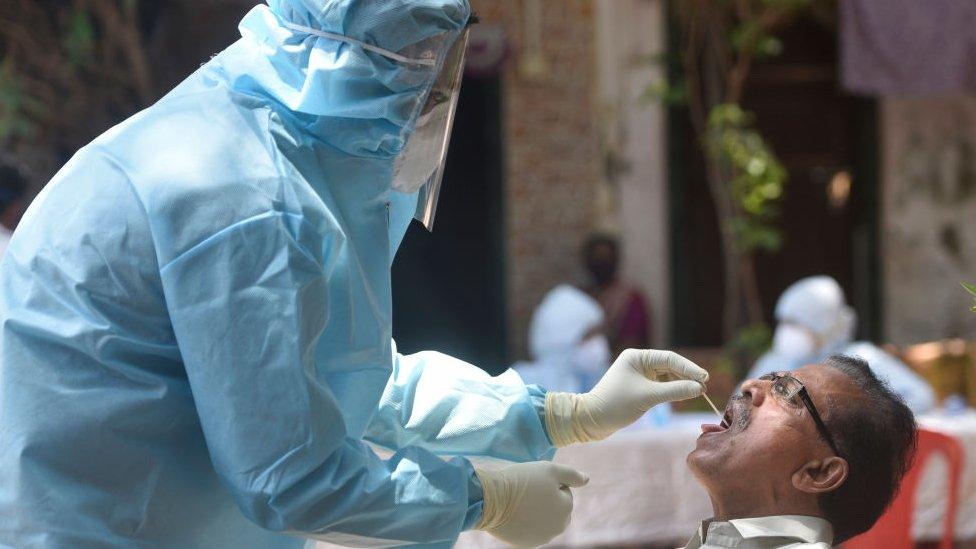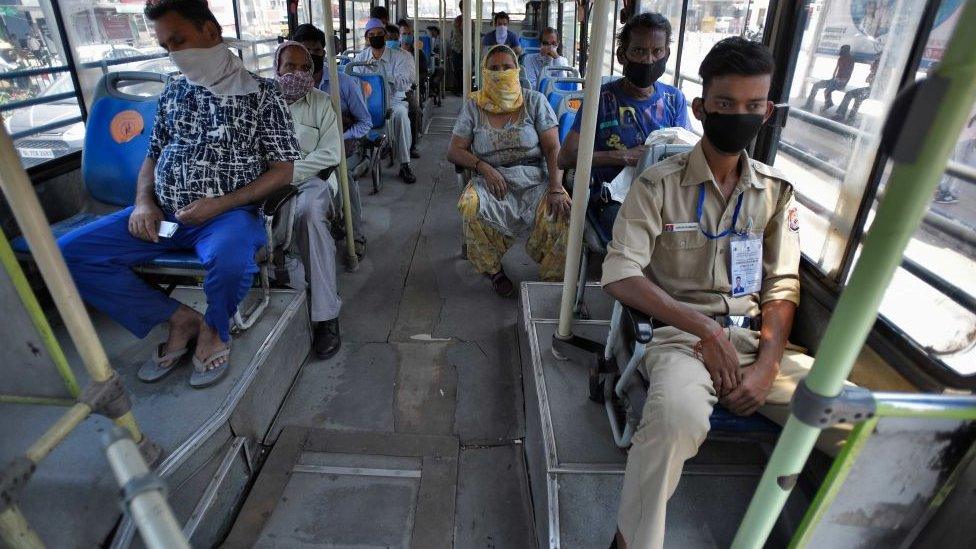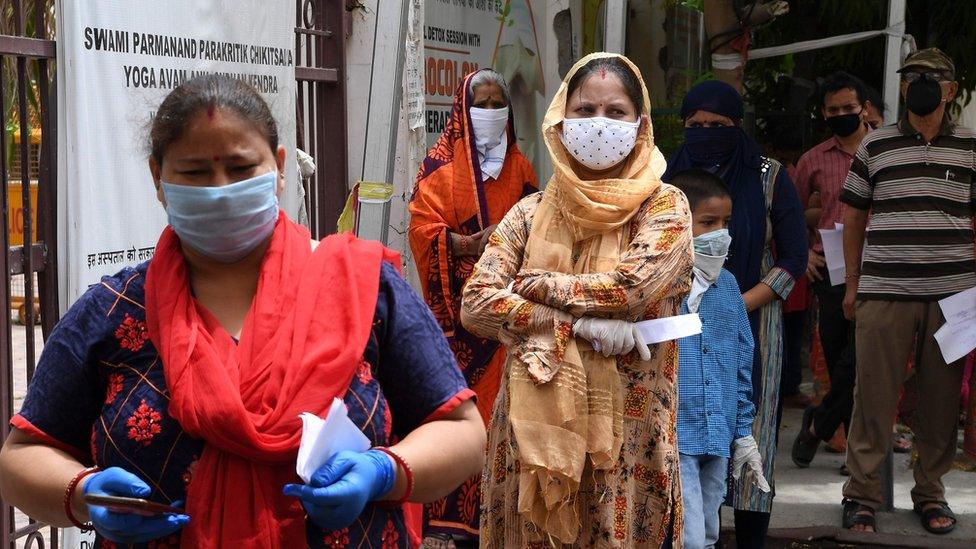Coronavirus: Why does India deny Covid community transmission?
- Published

Despite a surge in cases, India insists there is no community transmission of Covid-19 in the country.
"India is such a large country and prevalence is very low," said Balram Bhargava, head of the Indian Medical Research Institute.
Mr Bhargava was speaking at a press conference on Thursday about the findings of a survey tracking Covid-19 prevalence in India.
India has 297,535 confirmed cases - the fourth-highest in the world.
Mr Bhargava's comments have caused outrage, with many questioning why when cases are so high, the government says community transmission is not happening.
What is the government's rationale?
A community transmission case is generally accepted as meaning someone who gets the virus had no known contact with another confirmed case nor travelled from a country badly affected by the pandemic, meaning the virus is moving freely in the community.
However, India says there is no official accepted definition for the term.
The World Health Organization (WHO) has issued guidelines on how to manage community transmission, but their definition of what it is has been broad and vague.

Dr Jacob John, a prominent virologist, told the BBC that according to government data, about 0.3 or 0.4% of India's population have been tested.
"In my view, there are two countries in India right now - the four million, or 0.4%, tested and the rest. So in a way, the government is saying that 99.6% of the country is uninfected - which means the prevalence of infection is very low.
"And because of such a low rate, there is no community transmission."
Dr John says while there are clear signs of community transmission happening, authorities "won't call it that without the consent of the federal government".
Delhi health minister Satyender Jain has admitted that there was transmission in the community in the capital. But he said it was up to the federal government to declare it as community transmission.
"There is a heightened debate around the term and then the WHO has not defined it," said Dr Bhargava. "We are definitely not in community transmission. It is only a term."
'We are infecting each other'
Medical experts say the truth of community transmission is not something that should even be up for debate at this point.
"It is indigenously spreading - at first it was an outbreak imported from outside, then it became an Indian epidemic and today this is what it is," said Dr John.
"We are infecting each other. That is the true definition of community transmission. The source is now immaterial. It is truly an indigenous epidemic, it is spreading in the community so according to my definition, there is community transmission."
Dr John said ICMR data had shown that less than one percent - 0.73% - of cases across 83 districts showed evidence of past exposure to confirmed cases, and if that was not community transmission "how else were they exposed?"
"It means it is community transmission in its very early stages. They essentially admitted it themselves without naming it," he said.
Others have said that this denial has dangerous implications.
"We have nearly 300,000 cases and inching closer to 10,000 deaths. These lies cost lives," veteran health reporter Vidya Krishnan tweeted. , external
- Published6 June 2020

- Published11 June 2020
